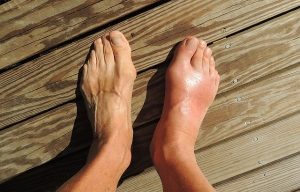Another name for progressive flatfoot is Posterior Tibial Tendon Dysfunction. The posterior tibial tendon is found in the calf down to the inside of the ankle to the middle section of the foot. It is responsible for holding up the arch of the foot and gives us support when walking. Progressive flatfoot happens when the tendon becomes inflamed, stretched or torn, causing the arch to collapse.
Not to be confused with plantar fasciitis, which is the inflammation of the plantar fascia, causing the bottom of the foot to hurt and swell. While progressive flatfoot is an injury to the tendon, plantar fasciitis is a strain to the ligament.
Signs
Patients with progressive flatfoot will experience pain on the inner side of the ankle. The arch of the foot is now flat and pain gradually develops on the outer side of the ankle as well. Patients may be unable to or experience difficulty in supporting their weight on their toes.
Causes
Progressive flatfoot is often caused by trauma to the ankle from sports or outdoor activities such as soccer, running and hiking. The posterior tibial tendon is overstretched, resulting in inflammation. This condition can also happen to patients with an abnormality of the tendon, usually women over the age of 50. Obese and diabetic patients are also at higher risk for this injury.
Treatment
Treatment is important to prevent chronic pain or even disability. If left unattended, the tendon would stiffen up and it might be difficult to walk or wear shoes. Arthritis would develop in the hind foot and the pain would spread to other parts of the ankle.
Non-Surgical Treatment:
If the condition is mild, patient would be wearing a cast or brace for 6-8 weeks to prevent the foot from weight bearing. At this point, anti-inflammatory drugs and plenty of rest are needed to recover. Patient would need to wear a shoe insert to support the arch after the cast is removed.
Surgical Treatment:
For more severe cases or if the condition does not get better with non-surgical treatment, the doctor would recommend surgery. The surgical procedure may include cleaning away inflamed tissue, changing the alignment of the heel bone, repairing the damaged tendon, recreating the arch of the foot or joining two bones together to stabilize the hind foot.









